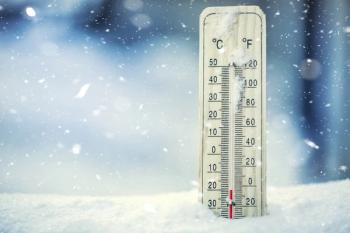
Prediction Model Identified Risk Factors for ED Visits in Patients With Lung Cancer
A risk prediction model that was based on machine learning could help to make resource utilization more efficient by correctly predicting emergency department (ED) visits in patients with lung cancer.
A machine learning–based risk prediction model was able to predict emergency department (ED) visits in patients with
Lung cancer is a severe disease, causing 1.8 million fatalities worldwide in 2020. ED visits are frequent among these patients due to complex health care challenges, such as progression and comorbidities, and about 10% of all ED visits due to cancer are attributed to lung cancer. Being able to predict these visits could help to lower the likelihood of a poor prognosis, the authors noted. This study identified factors that could affect ED visits and used a prediction model based on machine learning to predict visits to the ED in patients with lung cancer.
Electronic health records from Seoul National University Bundang Hospital in the Republic of Korea were used for this study. Eligible patients included those 18 years and older who were diagnosed with lung cancer between 2010 and 2017. Any outpatient visits in the 5 years after the patient’s diagnosis were included. Patients who did not have a follow-up period longer than 6 months were not included in the study.
The occurrence of visits to the ED within 30 days following the outpatient visit, restricted to visits that did not need a transfer to another hospital, was regarded as the primary outcome of the study. Patient demographics, clinical information, vital signs, laboratory results, and visit histories were used as candidate predictors. Machine learning models used were the logistic regression, random forest, extreme gradient boosting, and light gradient boosting models.
There were 222,127 outpatient visits from 5000 patients that were included in the study. The median (IQR) age of the patients was 67.23 (60.54-75.57) years, with 76.24% older than 60 years. A total of 64.14% of the patients were men and more than 66.4% of the patients did not have comorbidities prior to their diagnosis of lung cancer, although 24.24% had a history of smoking.
There were 8192 visits to the ED from patients with lung cancer, with 2790 occurring during the course of their disease. A total of 81.33% of the visits were from home, with the rest from outpatient visits, and the median (IQR) length of time in the ED was 13.64 (2.98-15.84) hours. Hospitalization was the result of 38.32% of all visits to the ED and 1.18% resulted in death.
The overall area under the receiver operating characteristic curve (AUROC) was between 0.70 and 0.73 in all models; the highest area under the precision recall curve score was 0.24 in the light gradient boosting model. The light gradient boosting model was the highest-performing model and it singled out recent ED visits, elapsed days since the initial diagnosis of lung cancer, lymphocyte and albumin levels, and use of analgesics as features that helped to predict the risk of a visit to the ED.
There were some limitations to this study. It was conducted in a single institution in the Republic of Korea, which could have led to reduced generalizability and potentially biased results. Performance limitations existed in the machine learning models, notably that all visits to the ED were considered, which could have included visits not related to cancer. Research bias was also possible, due to imputing missing values with the median value while processing data.
The researchers concluded that factors influencing visits to the ED were identified and can be used in a model to predict visits to the ED in patients with lung cancer. Being able to predict these visits to the ED can help health care providers to monitor patients closer and make timely changes in treatment and referrals that can improve outcomes.
Reference
Lee AR, Park H, Yoo A, Kim S, Sunwoo L, Yoo S. Risk prediction of emergency department visits in patients with lung cancer using machine learning: retrospective observational study. JMIR Med Inform. 2023;11:e53058. doi:10.2196/53058
Newsletter
Stay ahead of policy, cost, and value—subscribe to AJMC for expert insights at the intersection of clinical care and health economics.







































